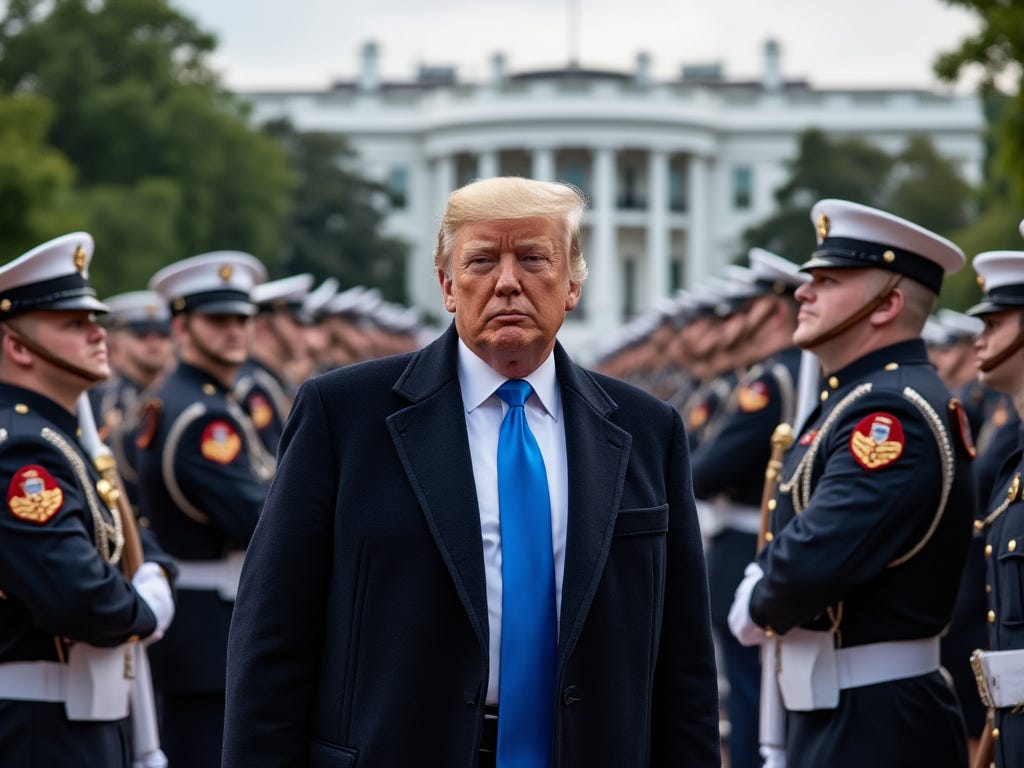Will the United States Fundamentally Change its Global Outlook Under Trump?
Donald Trump’s 2025 return to the White House could fundamentally reshape U.S. policies, though the entrenched State Department and “deep state” influences may temper his ambitions.

Enter Trump, Exit Biden
As the world braces for the Trump presidency set to begin in January 2025, there is widespread anticipation and debate regarding potential shifts in U.S. domestic and foreign policies. Markets—both traditional and crypto—have already shown significant reactions, while discussions in official and unofficial circles delve into how dramatically the U.S. might adjust its stance on global affairs. Donald Trump’s previous term marked a sharp departure from the post-WWII global order, influencing key areas like immigration, trade, and defence alliances.
This article examines 10 key areas where U.S. policy could fundamentally shift and considers the impact of these changes on the United States and the world. Given Trump’s distinct worldview, the question arises: how far and how fast can these transformations take place, especially given the formidable influence of the State Department and a resilient “deep state” that may counterbalance his ambitions?
Key Policy Areas and Potential Shifts
Immigration Policy and Workforce Needs
Trump’s stance on immigration remains strict, particularly concerning illegal immigration. A policy emphasis on deportation may intensify under his leadership. Conversely, there may be a streamlined pathway for high-skilled workers, particularly in the tech sector, to gain green cards and citizenship, which would directly impact Indian tech professionals and the broader Indian-American community.
Russia-Ukraine Conflict:
Trump’s return may signal a shift in the U.S. approach to the Russia-Ukraine war. His earlier reluctance to provide unequivocal support to Ukraine suggests he might seek to limit U.S. involvement, potentially reshaping alliances and the future of NATO-backed support in Eastern Europe.U.S. Role in NATO and Defence Alliances:
Trump has previously questioned the financial burden NATO places on the U.S. If he seeks to reduce funding or U.S. involvement, this could alter the balance of power in Europe, leaving the continent to shoulder a greater share of its own defence needs.Support for Israel Amidst the Israel-Hamas Conflict:
Trump's staunch support for Israel could deepen, extending not only military support but also advanced technology and intelligence aid. This stance could escalate tensions in the region, especially as Qatar, home to a major U.S. Air Force base, recently signalled it might reconsider its mediation role.Dollar Policy and Monetary Policy Shifts:
The U.S. dollar’s dominance in global trade may be impacted if Trump opts for increased printing and monetisation of deficits, which he has previously shown interest in. While this might stimulate short-term domestic economic growth, it could destabilise global markets and impact economies that rely heavily on the dollar.Cryptocurrency and International Trade:
Trump's openness to cryptocurrency, and particularly Bitcoin, could introduce a new dynamic to international finance. This shift could facilitate faster global transactions, but it also raises concerns about increased money laundering and the potential for funding illicit activities.6A. Artificial Intelligence:
Trump’s administration is expected to advocate minimal regulation on AI, encouraging innovation but potentially at the cost of risks related to responsible AI. This approach contrasts with global efforts for ethical AI practices, prioritising rapid technological advancement over cautious implementation.Trade Relations with China and Potential Tariffs:
Trump’s strong stance on curbing Chinese imports through high tariffs could impact American consumers and Chinese exporters alike. His stance on the World Trade Organization, perceived as favouring China, may create additional tensions, with ripple effects on U.S.-India trade relations.Commitment to Climate Change and the Paris Agreement:
Trump’s past disengagement from the Paris Agreement raises the possibility of a repeat withdrawal. Emphasis on domestic fossil fuel production would counter global climate efforts and risk isolating the U.S. in international climate discussions, potentially hindering progress in global climate initiatives.Relations with BRICS:
With the expansion of BRICS to include countries like Saudi Arabia and Iran, Trump’s approach could become adversarial, viewing the bloc as a competitor to U.S. influence. This approach may pressure allies like India to align more closely with the U.S. than BRICS, impacting India's foreign policy dynamics.Military and Strategic Presence in Asia-Pacific:
Trump’s commitment to countering China’s influence in the Asia-Pacific may lead to increased U.S. military spending in the region. Enhanced defence presence around the Indian Ocean and Asia-Pacific could bolster India’s efforts to check China’s maritime influence, although this could strain U.S.-China relations.
Summing Up and Looking Forward
Donald Trump’s imminent return to the White House in 2025 could usher in profound changes to U.S. global and domestic policies. However, the deep-rooted influence of America’s State Department and an entrenched “deep state” might limit the scope and speed of Trump’s ambitions. While Trump’s policies could indeed create a marked shift in international relations, longstanding diplomatic frameworks and institutional inertia may constrain the extent to which these changes impact the established global order. Only time will reveal the durability of Trump’s intended legacy amidst the push-and-pull of U.S. bureaucratic resilience.
As the famous Chinese curse goes: “May you live in interesting times.”




……..Donald Trump’s previous four years tenure didn’t finish with much global revolutions. In his second term, it is quite possible that much time may be spent in assessing which side the horse is running, taking few turns in between……